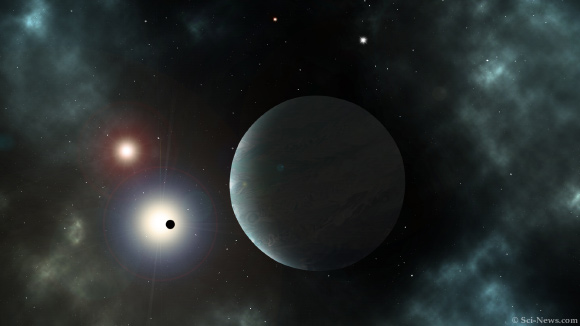Astronomers have discovered two planets orbiting a bright dwarf star in the binary stellar system Gliese 414.
Source: Sci News
Gliese 414 is located approximately 39 light-years away in the constellation of Ursa Major.
Also known as GJ 414, HD 97101 or HIP 54646, the system is 12.4 billion years old.
It consists of a relatively active K7V-type dwarf star, Gliese 414A, and its smaller M2V-type dwarf companion, Gliese 414B.
The physical separation between the two stars is around 408 AU (astronomical units).
The two newfound exoplanets, named Gliese 414Ab and c, orbit the larger star in the system.
The inner planet is a sub-Neptune in a 50.8-day eccentric orbit.
It is 2.95 times the size of Earth, 8.8 times as massive, and has a temperature of around 31 degrees Celsius (88 degrees Fahrenheit).
The outer planet is a sub-Saturn in a nearly circular orbit with an orbital period of 748.3 days.
It is 8.8 times the size of Earth, 56.3 times as massive, and has a temperature of minus 150 degrees Celsius (minus 238 degrees Fahrenheit).
The planets were found using radial velocity data from the HIRES instrument on the Keck I telescope at W.M. Keck Observatory and the Automated Planet Finder at Lick Observatory, as well as photometric data from KELT-North telescope at Winer Observatory.
“Gliese 414Ac resides near the inner edge of the star’s habitable zone, but its minimum mass is large enough that it likely possesses a substantial volatile-rich envelope,” Pennsylvania State University astronomy Cayla Dedrick and colleagues wrote in their paper.
“This planet is a potential candidate for future direct imaging missions.”
The team’s paper will be published in the Astronomical Journal.
Source: Sci News

































Leave a Comment
You must be logged in to post a comment.